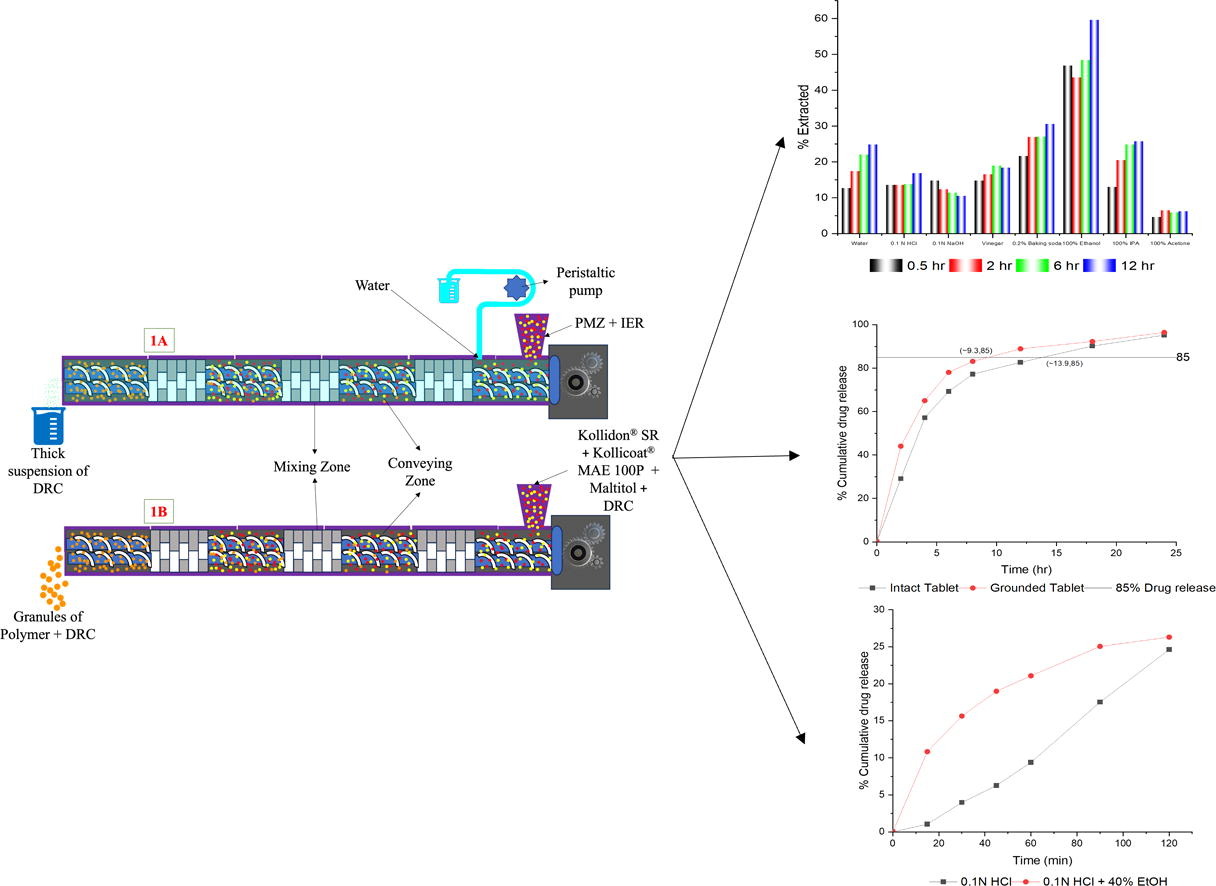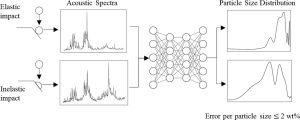Assessing Abuse-Deterrent formulations utilizing Ion-Exchange resin complexation processed via Twin-Screw granulation for improved safety and effectiveness

Opioid misuse is a public health crisis in the United States. In response, the FDA has approved drug products with abuse-deterrent features to reduce the risk of prescription opioid abuse. Abuse-deterrent formulations (ADFs) typically employ physical or chemical barriers or incorporate agonist–antagonist combinations as mechanisms to deter misuse. This study aims to assess the impact of abuse-deterrent properties, specifically ion-exchange resin complexation as a chemical barrier, on a model drug, promethazine hydrochloride (PMZ) tablets. Various formulations were developed through twin-screw wet granulation (TSWG) followed by twin-screw melt granulation (TSMG).
In the TSWG process, the drug interacts with the resin through an exchange reaction, forming a drug-resin complex. Additionally, the study explored factors influencing the complex formation between the drug and resin, using the drug loading status as an indicator. DSC and ATR studies were carried out to confirm the formation of the drug-resin complex. Subsequently, hot melt granulation was employed to create a matrix tablet incorporating Kollidon® SR and Kollicoat® MAE 100P, thereby enabling sustained release properties. The drug-resin complex embedded in the matrix effectively deters abuse through methods like smoking, snorting, or parenteral injection, unless the drug can be extracted.
In order to assess this, solvent extraction studies were conducted using an FDA-recommended solvents, determining the potential for abuse. Further investigations involved dissolution tests in change-over media, confirming the extended-release properties of the formulation. Results from dissolution studies comparing the ground and intact tablets provided positive evidence of the formulation’s effectiveness in deterring abuse. Finally, alcohol-induced dose-dumping studies were conducted in compliance with FDA guidelines, concluding that the formulation successfully mitigates dose dumping in the presence of alcohol.
Read more here
Materials
Promethazine Hydrochloride (PMZ) was purchased from IPCA, Purolite® C100MRNS (Sodium Polystyrene Sulfonate) was gifted by Purolite, Kollidon® SR and Kollicoat® MAE 100P were gifted by BASF, SweetPearl® (maltitol) was purchased from Roquette, AFFINISOLTM HPMC 100LV (Hydroxypropyl methylcellulose) was gifted by Dupont, AquaSolve HPMCAS M−grade (hydroxypropyl methylcellulose acetate succinate) was gifted by Ashland.
Siva Ram Munnangi, Nagarjuna Narala, Preethi Lakkala, Sateesh Kumar Vemula, Michael Repka, Assessing Abuse-Deterrent formulations utilizing Ion-Exchange resin complexation processed via Twin-Screw granulation for improved safety and effectiveness, European Journal of Pharmaceutics and Biopharmaceutics, 2024, 114230, ISSN 0939-6411, https://doi.org/10.1016/j.ejpb.2024.114230.
Read also more articles on Twin-Screw granulation here:
- PVA as binder in continuous twin-screw granulation
- Control oriented modeling of twin-screw granulation in the ConsiGma-25 production plant
- Considering inelasticity in the real-time monitoring of particle size for twin-screw granulation via acoustic emissions


